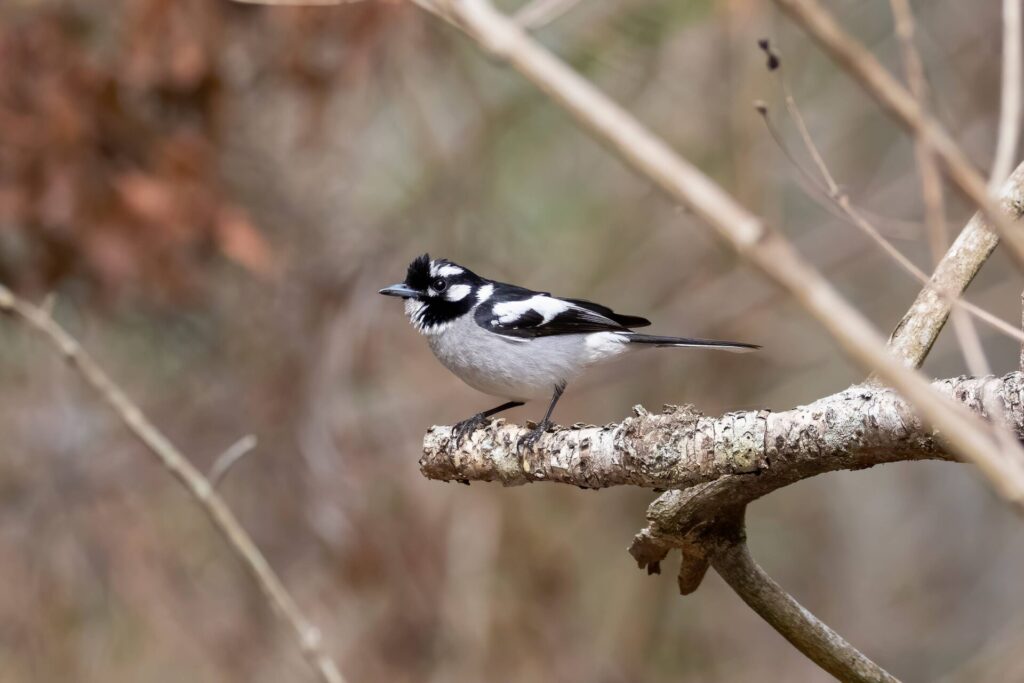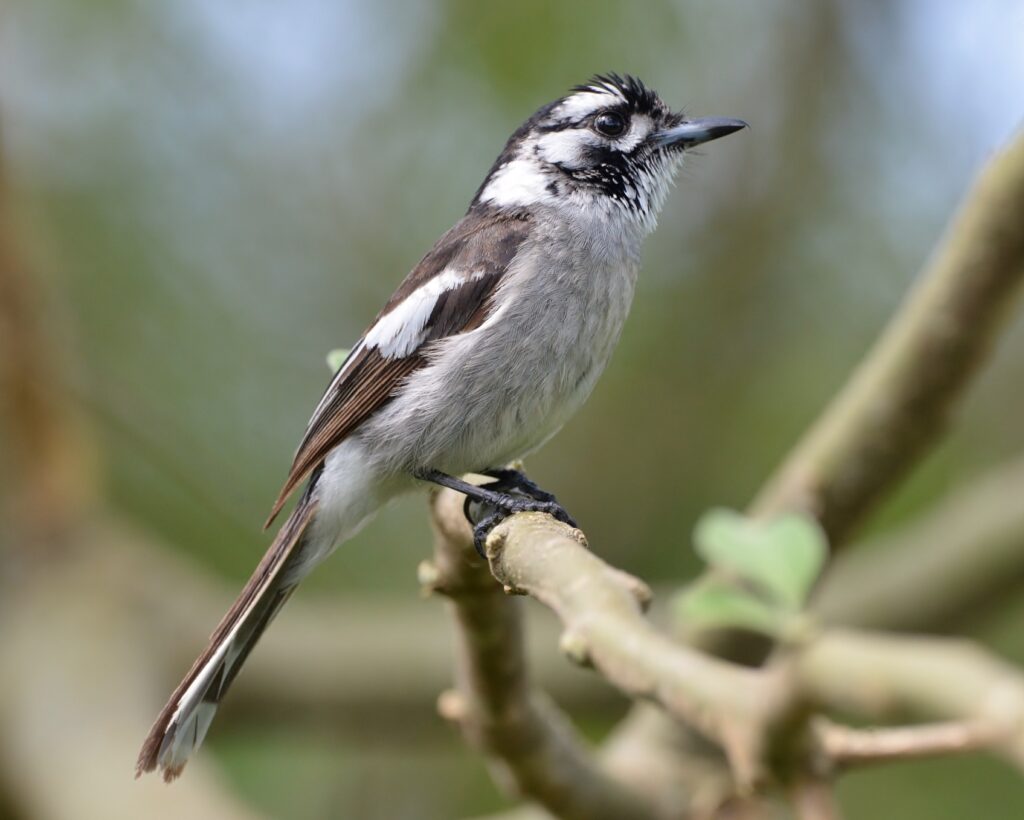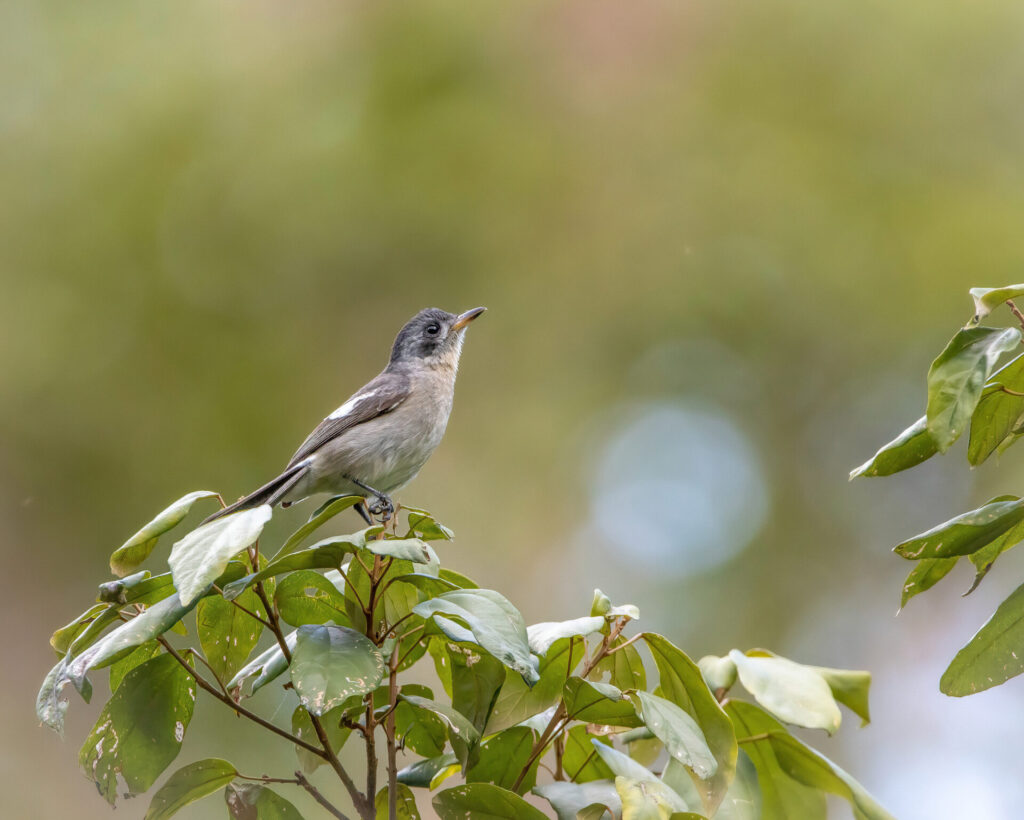The white-eared monarch is a distinctive pied coloured bird usually found high in the canopy of rainforest margins or at creek side vegetation, inhabitating subtropical to tropical forests along the Queensland coast and into northern New South Wales. White-eared monarchs are more commonly found on the coast than in highland areas, in rainforest and wet forests east of the Great Dividing Range. They often forage for insects on the outer edges of the canopy, usually found solitary or at times in small family groups. Due to their discrete nature, white-eared monarchs are usually heard before they are seen. Identifiable by its distinctive song – a downward three-note whistle (pheew-pheew pheeeew).

Male and female white-eared monarchs are near indistinguishable, although females are said to be slightly duller and greyer than adult males, with little to no black mottling on the throat. Juveniles are easily distinguished by their paler and browner plumage, yellow gape, with a very different facial pattern and less white markings on the tail and wing. The timing of moult to adult plumage is poorly known, but likely commences at around one year old. Immature birds are superficially similar to adults with less clearly pied plumage and retained grey-brown juvenile coverts and tail feathers.

White-eared monarchs are thought to breed around September to March, though based on a handful of studies only. Nests are usually built high in the outer foliage of the canopy but have also been found lower down in small shrubs. Their nests are constructed from grasses, bark, leaves and casuarina needles and lined with softer material such as moss, spider web and egg sacs. Their preference for paler nesting material gives the nests a unique whitish appearance. Both sexes partake in nest construction and are speculated to both incubate.

Observationally, white-eared monarchs appear to be associated with remnant dry rainforest, vine forest or gully vegetation (Regional Ecosystem 12.3.10, 12.11.3, 12.3.16) in Brisbane, which was much more prevalent prior to clearing and settlement. White-eared monarchs can be found at popular South-east Queensland birding locations such as Gold Creek Reservoir, Samford Eco-corridor and Lake Samsonvale. Sightings have also been recorded in the western suburbs of Pine Mountain and north near Maleny, where remnant patches of suitable habitat remain. They have been recorded in regrowth rainforest, though potentially requiring older regrowth than other monarch flycatchers according to one study surveying <10 year old plantings. Whilst not a threatened species, this highlights the importance of conserving remnant forests and the importance of restoration to promote connectivity.
Movement patterns are poorly known. While no large-scale seasonal movements have been recorded, they are said to be primarily a resident species with some seasonally-driven altitudinal movements. When visiting the Tabbil-ban dhagun (Nudgee) boardwalk a few months ago following the unusual sighting of a Noisy Pitta, I was pleasantly surprised to find not only a juvenile white-eared monarch but also a juvenile black-faced monarch together in the mangroves. Perhaps white-eared monarch also follow our rainforest-associated species in their movement patterns. There is clearly much more to learn about the white-eared monarch as with many of our bird species!
References:
- Andersen M.J. et al. 2015. Phylogeny of the monarch flycatchers reveals extensive paraphyly and novel relationships within a major Australo-Pacific radiation. Molecular Phylogenetics and Evolution 83, 118-136.
- Beruldsen G.R. 1985. The white-eared Monarch Monarcha leucotis as a Possible Altitudinal Migrant. Australian Bird Watcher 11, 7-8.
- Freeman A.N.D. et al. 2009. Bird use of revegetated sites along a creek connnecting rainforest remnants. Emu 109, 331-338.
- Hardy J. 2015. White-eared Monarch – Bird in the Hand (2nd edition). Australian Bird Study Association Inc.
- Higgins, P.J. and Peter, J.M. 2002. Handbook of Australian, New Zealand and Antarctic Birds. Oxford University Press: Melbourne.
- Queensland Herbarium 2023. Regional Ecosystem Description Database (REDD), version 13 (May 2023). Department of Environment and Science: Brisbane. https://www.qld.gov.au/environment/plants-animals/plants/ecosystems/about
- Menkhorst P. et al. 2017. The Australian Bird Guide. CSIRO Publishing: Victoria.


